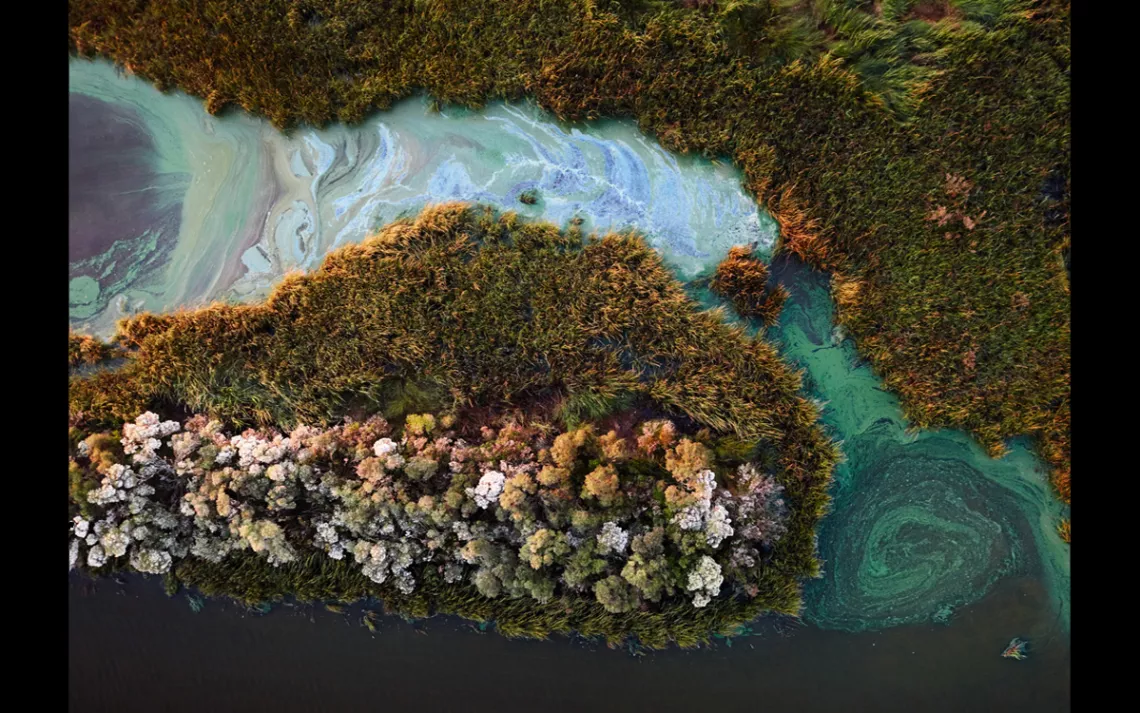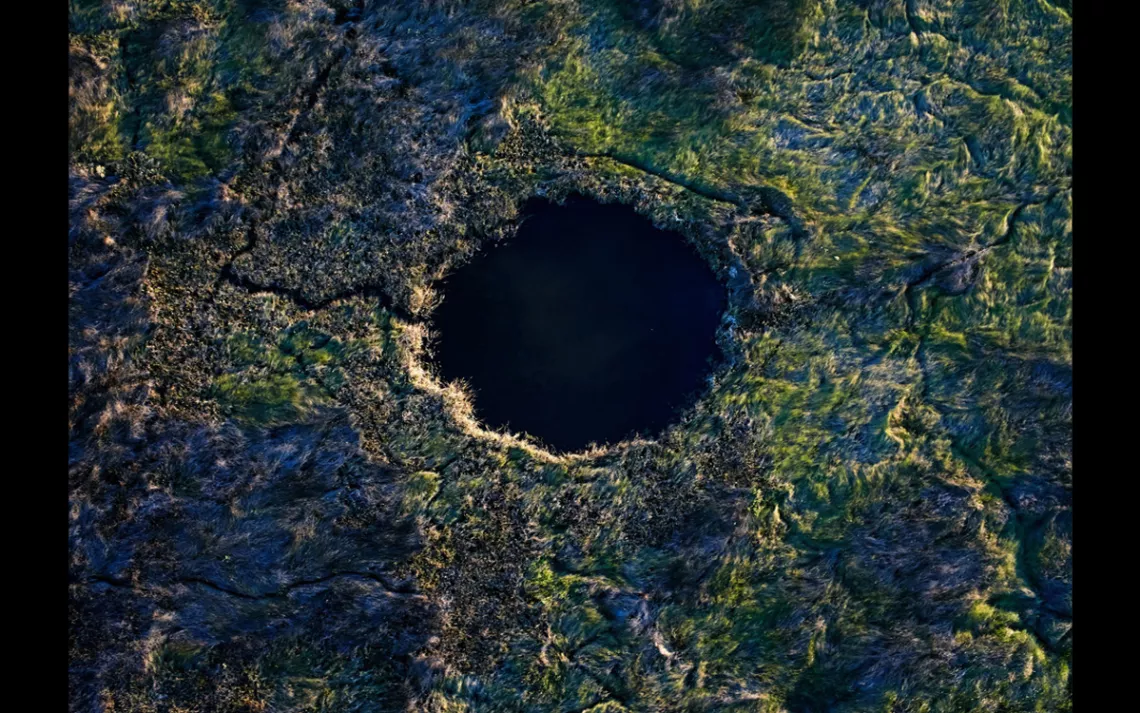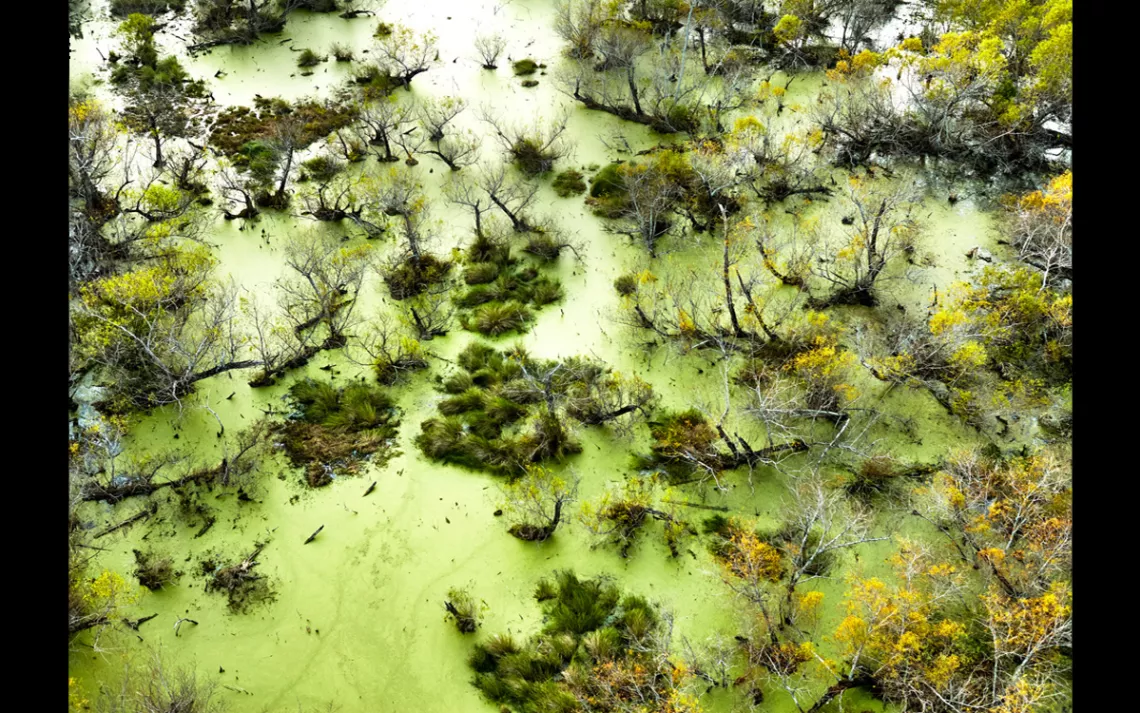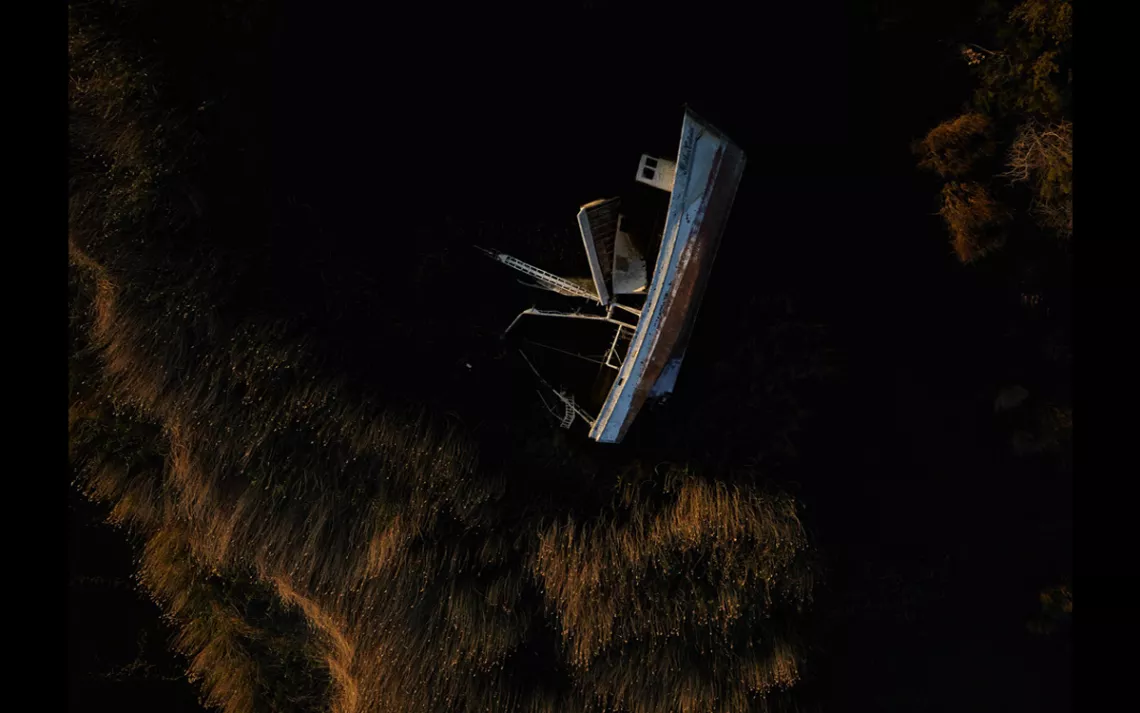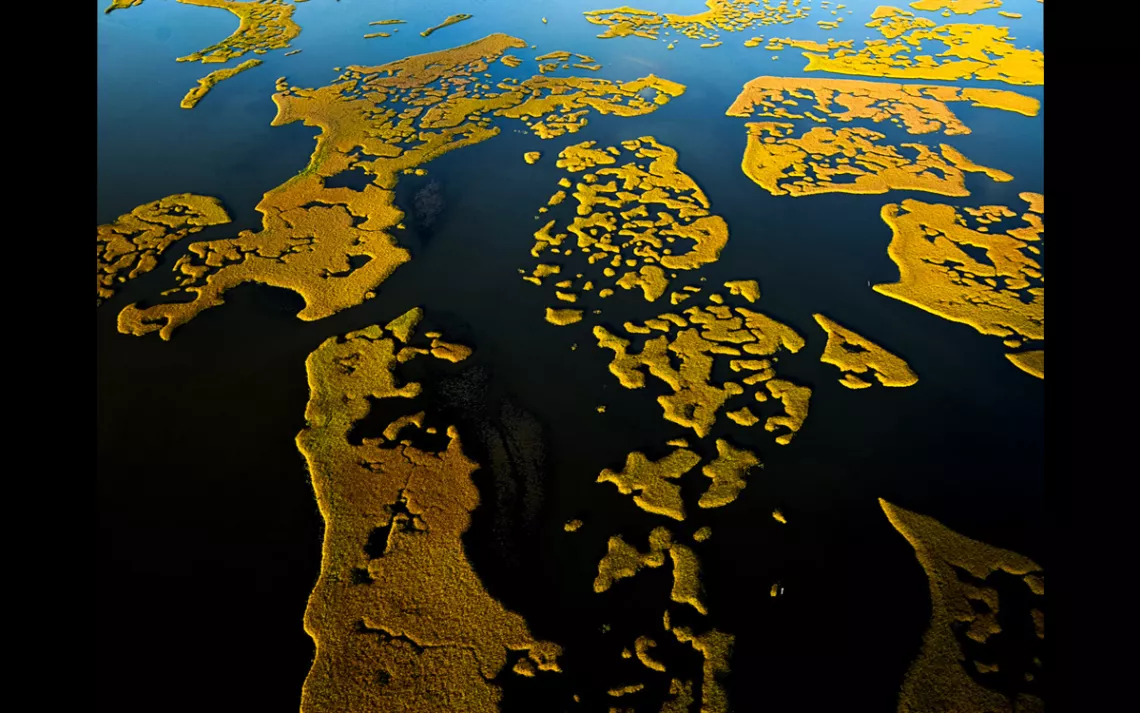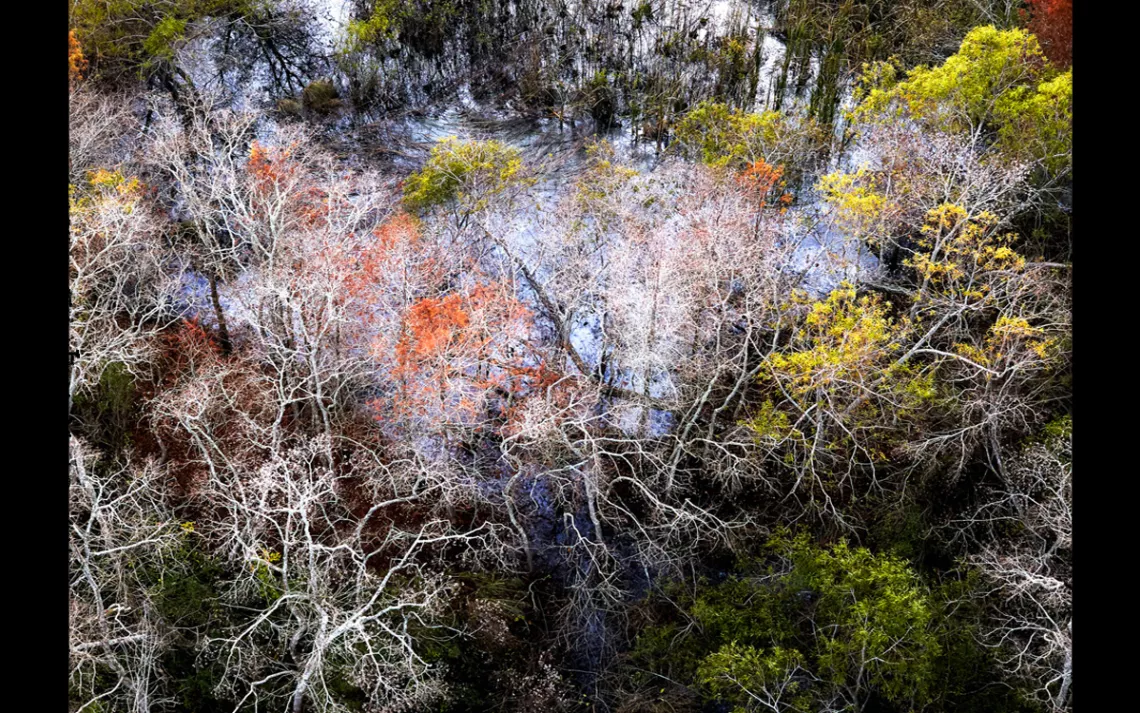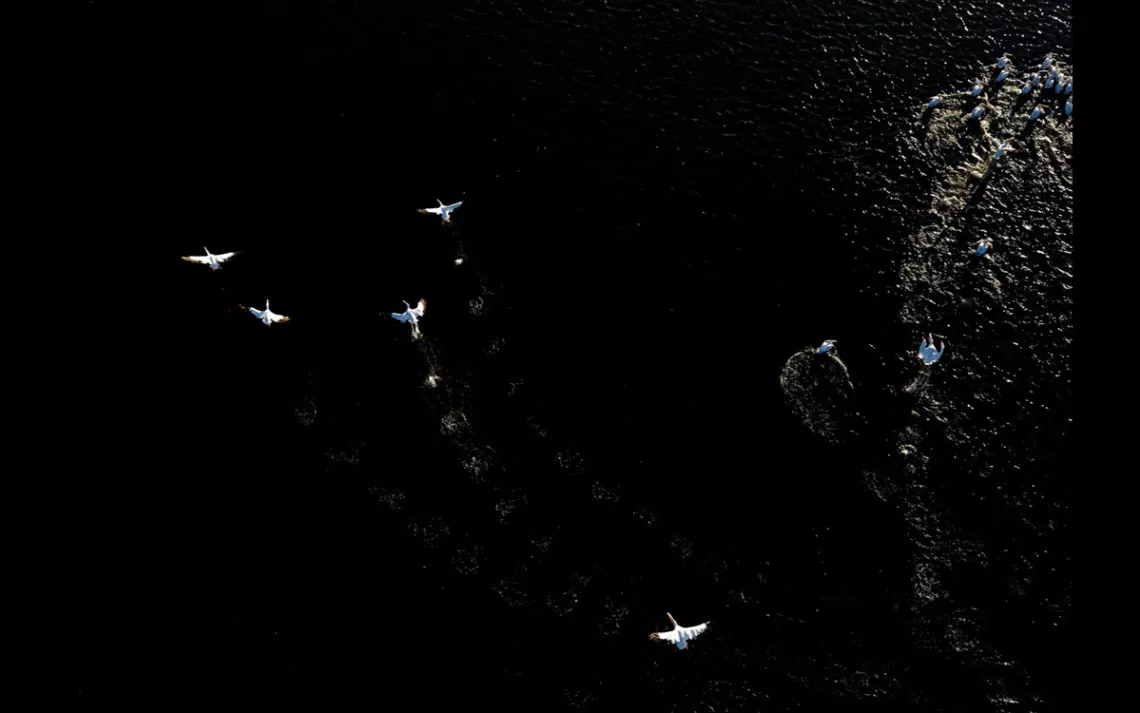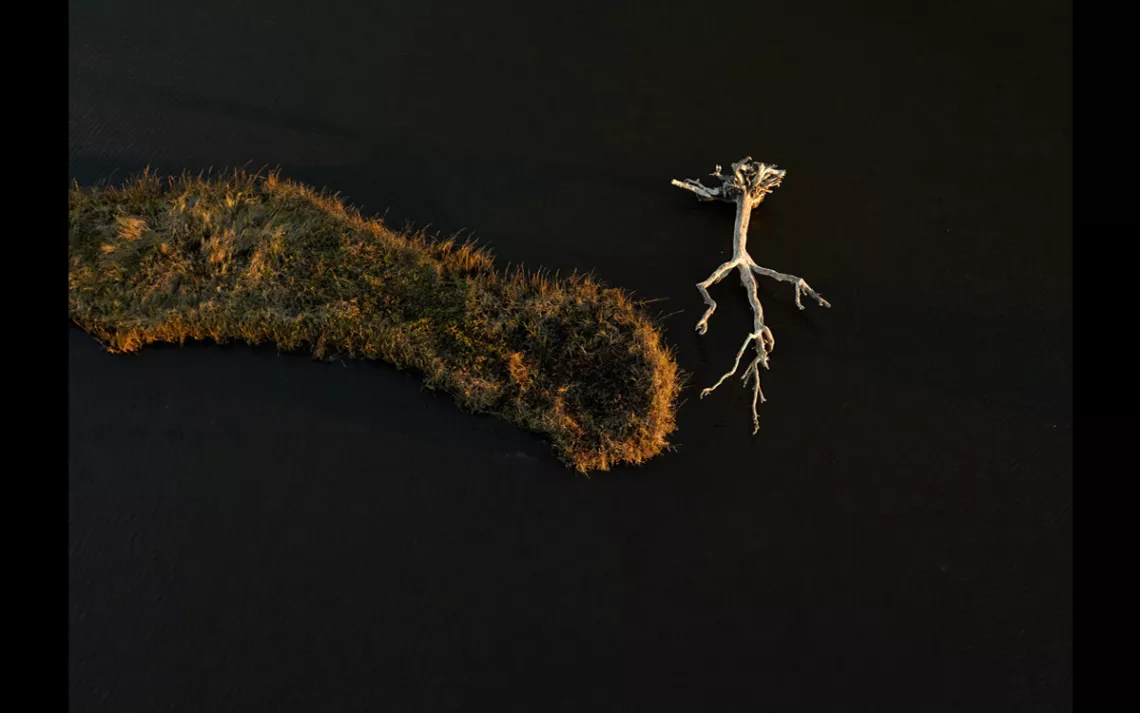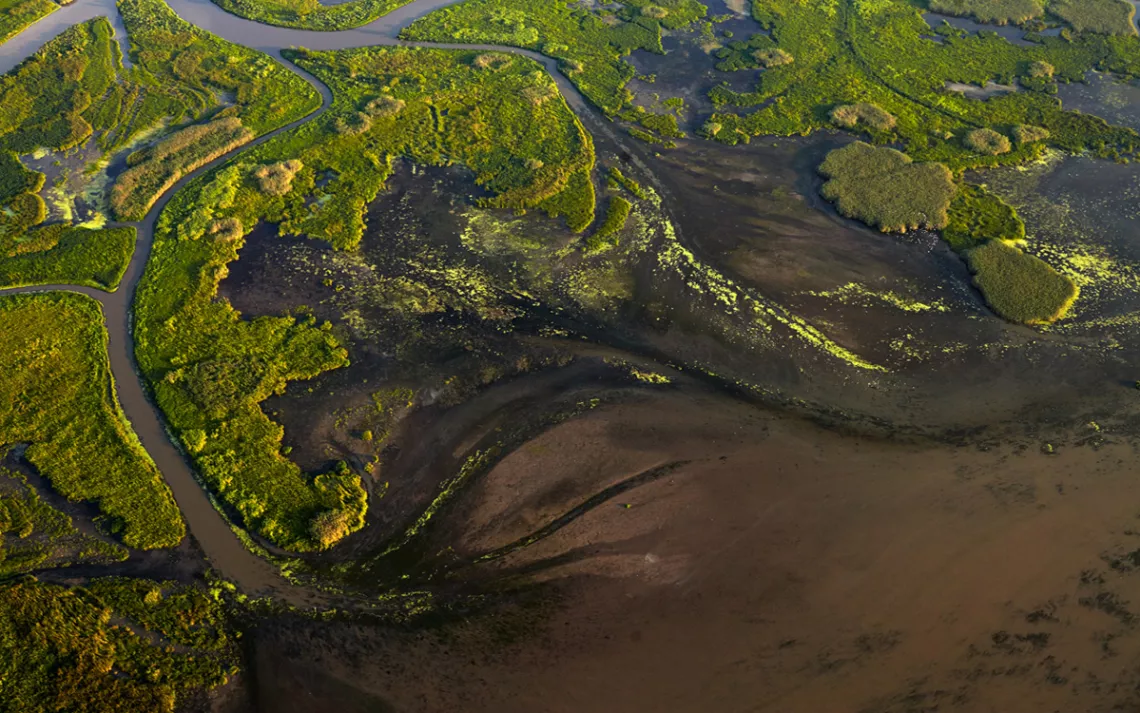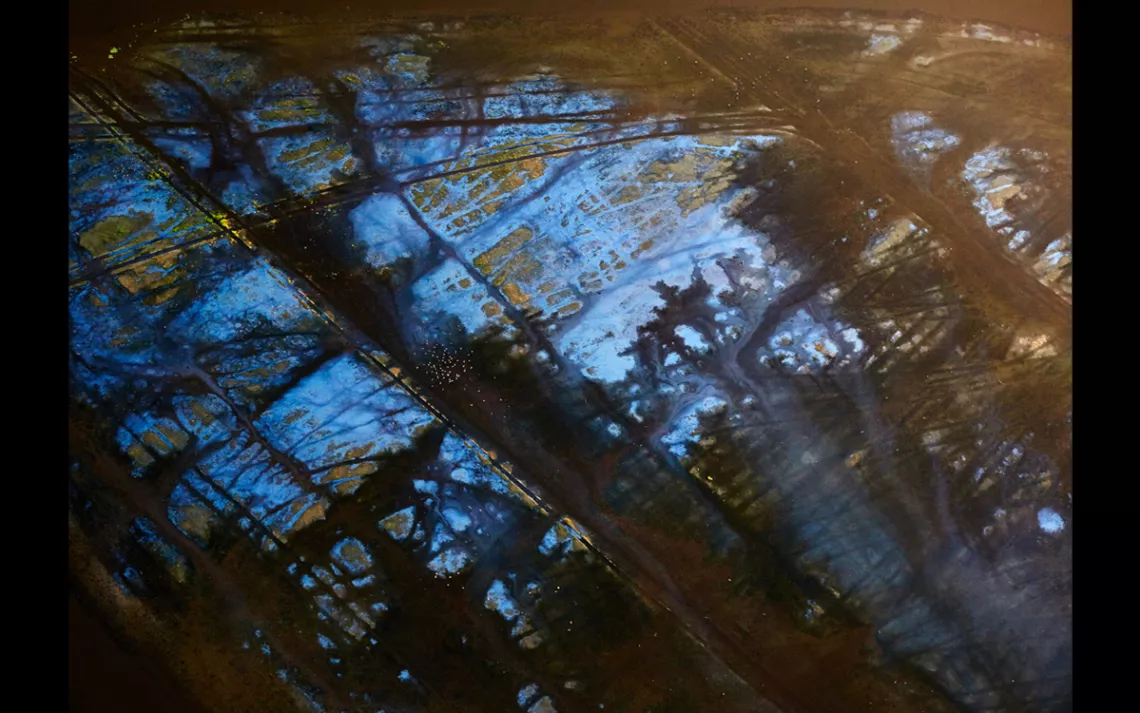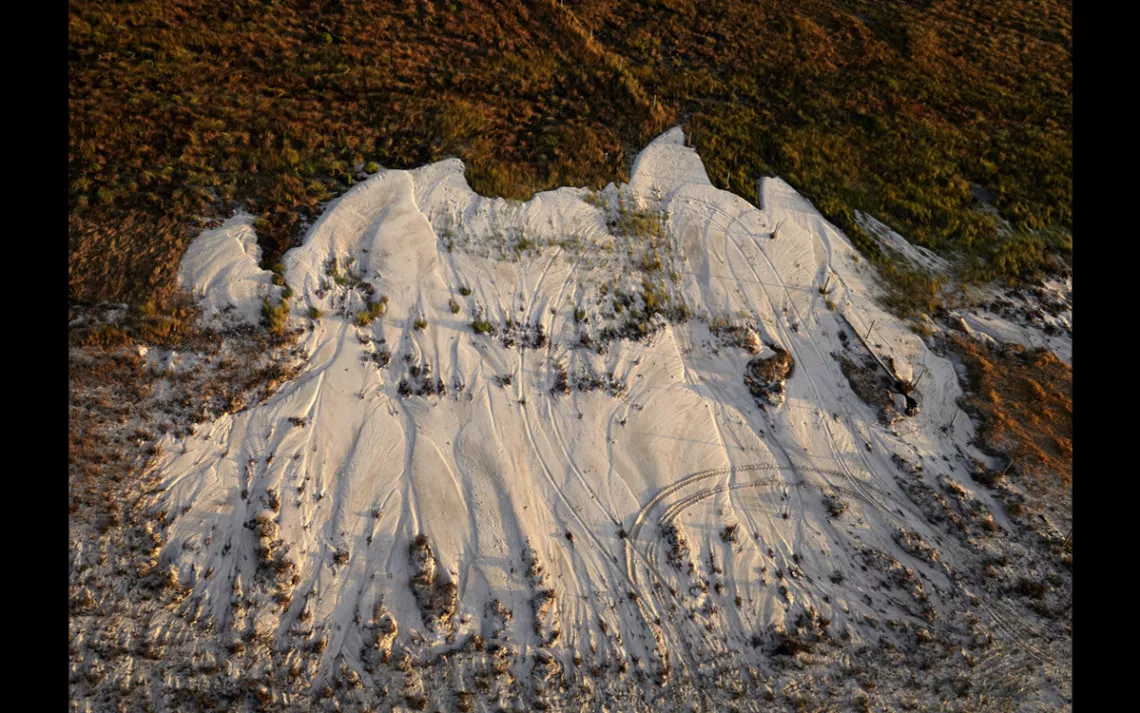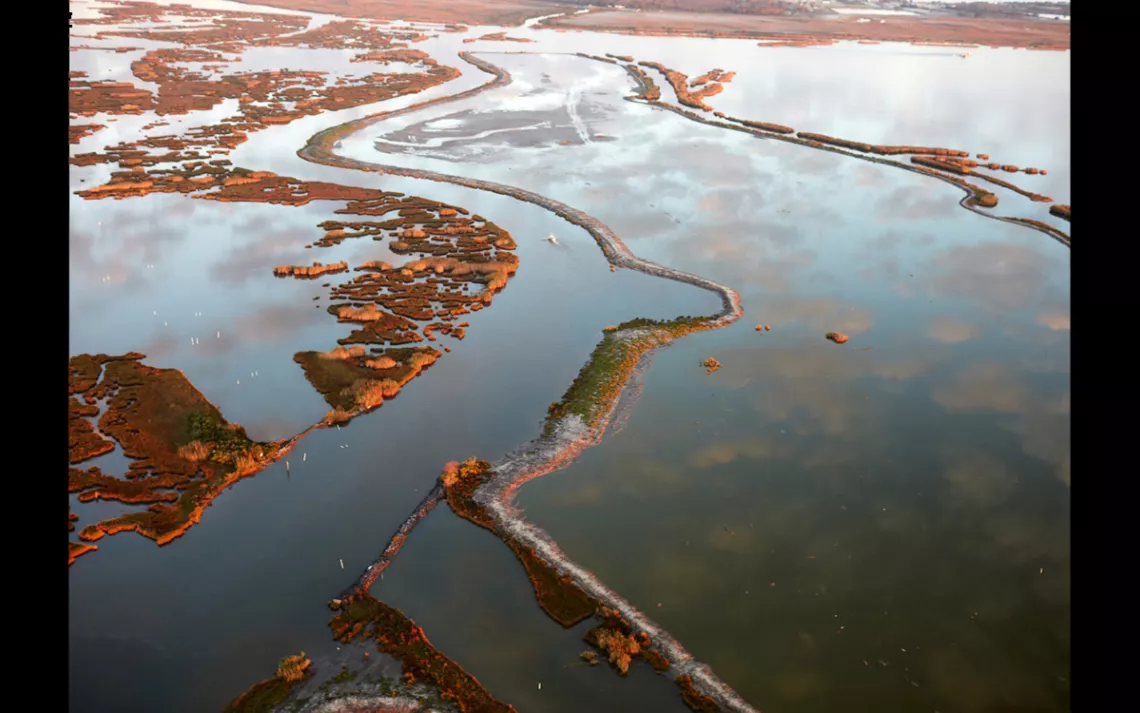The Tragedy and Wonder of Louisiana’s Wetlands
Photographer Ben Depp uses a paraglider to document a fading ecosystem
Photos by Ben Depp
In the bayous and marshes of the U.S. Gulf Coast, a rich and complex ecosystem is slowly fading away. Areas once teeming with otters, oaks, and cypress trees—and a wide variety of aquatic insects, fish, and reptiles—are disappearing at a rate of approximately a football field of wetlands an hour, according to the most recent U.S. Geological Survey study. Louisiana alone has lost 2,000 square miles in the last 80 years. Much of the erosion is attributable to natural changes in the ecosystem compounded by human actions that are making it worse: flood controls like levees that are starving the delta of revitalizing silt, saltwater intrusion connected to oil and gas development, and extraction of the region’s natural resources.
Without proper abatement, some research suggests, by 2040 Louisiana will lose an area of coastal wetlands the size of Rhode Island—a slow-drip tragedy happening in real time. These wetlands, while playing important roles as storm buffer and economic anchor, are also one of the nation’s environmental wonders. Photographer Ben Depp has dedicated himself to capturing this cradle of biodiversity before it’s too late.
“You have this incredible landscape down here, but you can’t point your camera in any direction without also photographing the destruction and the legacy of our recent impact on this environment,” Depp said in an interview. “Everywhere you look there are canals carved through the wetlands, there’s old gas and oil infrastructure, there’s endless levee systems. It’s hardly possible to take an image that leaves that stuff out.”
While the wetlands erosion has been well documented, no photographer has done it quite like Depp: He gets his shots while flying in a powered paraglider. The resulting images are precise and intimate, capturing both the narrative arc and the formal beauty of one of North America’s most endangered environmental treasures.
Depp moved to New Orleans in 2013 and was working as a photojournalist when he learned more about the region’s coastal erosion and wetlands loss. He looked into how other photographers had documented the story, especially related to human impacts. “I felt like that had been done well, but I still wanted to work on the subject. I wanted to add something to the body of work that would capture what was happening.”
His interest in photographing the wetlands from the air came to him while he was flying in and out of New Orleans on commercial flights. “You see this endless landscape of wetlands. And just from commercial flights, I saw how incredible the landscape was.” But when he looked at aerial photos taken of the region, he felt there was something missing. “Many of the photos didn’t do it justice. That motivated me to start taking my own.”
He looked into drones and other ways of doing aerial photography and decided that the powered paraglider would be the best platform to explore southern Louisiana. Depp took a five-day training course in Pensacola, Florida, and bought mostly used equipment, learning as he went.
Mastering a paraglider is one thing. But photographing a vast area of wetlands while doing it, at just the right angle, in just the right light, without wind, movement, or vibration getting in the way? And without dropping your camera, or being dropped yourself, out of the sky?
“It took me a little while to figure out,” Depp deadpanned.
He relies on a fast shutter speed to get his shots, even though he’s moving relatively slowly, at about 15 to 30 miles an hour. “I still need to use a really fast shutter speed. You’re moving off of low altitude, but my goal is to make images that are very still and formal compositions, instead of doing wide-angle, more reportage-style photos. I want the images to be formal and tight.”
Vast geographies burst with color and light in these photographs. The dense hues of wetlands algae near Montegut, for example, are streaked with chocolate, amber, and amethyst swirls, pulsing with waves into which one could seemingly float about. But tragedy is never far from beauty, as Depp points out. The lime-green, feathery trees on Pecan Island look like a kind of mossy opalescent slush, seemingly full of life—though in fact most of the trees in the area were killed by saltwater intrusion after Hurricane Rita.
In other images, the stark detritus of an ecology crumbling away could not be more apparent, perhaps no more so than in a photograph of a dead oak lying across the water, also killed by saltwater intrusion, with some grass illuminated nearby. Depp took the picture early on in the project, in the late afternoon. The sun was low in the sky and just illuminating the tree with a little bit of grass to the side, the water opaque in the background—a sad and surreal representation of the ecology there.
Depp’s goal is to produce images that are truly immersive, and the paraglider is key to that process. “When I look at aerial images, they are real wide-angle with tilted horizons that are just a little looser. For me, I’m reminded of the photographer who took them and of the process involved. I think with the more formal compositions, it’s easier to forget that the photographer was there and easier to get lost in the image in front of you.”
To pull it off, he sets himself in the glider to be in a position to let go of the steering controls when he’s airborne. His camera is attached to his harness by a carabiner such that he can photograph as he would on the ground. Depp typically uses a Canon 5DS R 50-megapixel digital camera, and just one 35mm lens.
Exploration is a crucial part of his process, and the paraglider is what makes that possible. “A lot of these pictures came about from just exploring without knowing what was there,” he says. “In contrast, if I had been photographing with a drone, for example, I would’ve had to know already what was exactly there and then launch the drone and fly it for a max of 30 minutes and bring it back. With a paraglider, you can go out and explore and just find a composition that’s compelling, and then kind of hang out in the air and wait for the light to change, and wait for these moments at the end of the day or at sunrise when the light is really sculpting the landscape on the ground.”
Depp has never lost a camera during one of the trips. But he has had some hard landings, including one fall into a tree. His glider is powered by a used motor, and Depp does all the maintenance himself. The motor has turned off a few times in mid-air. “Probably because I’m not the best mechanic,” he says. “This is mostly marsh and swamp, so I always have to be conscious to stay close to dry land. If I’m not within gliding distance of dry land, I have to be very aware of where I am in relationship to that dry land in case I end up having to swim back.”
Depp’s photographs incorporate both the tragedy and the wonder that Louisiana’s coastal wetlands represent. They are beautiful images that seek to do justice to a vital ecosystem, and they're a call to action, to do what we can to save it.
 The Magazine of The Sierra Club
The Magazine of The Sierra Club
